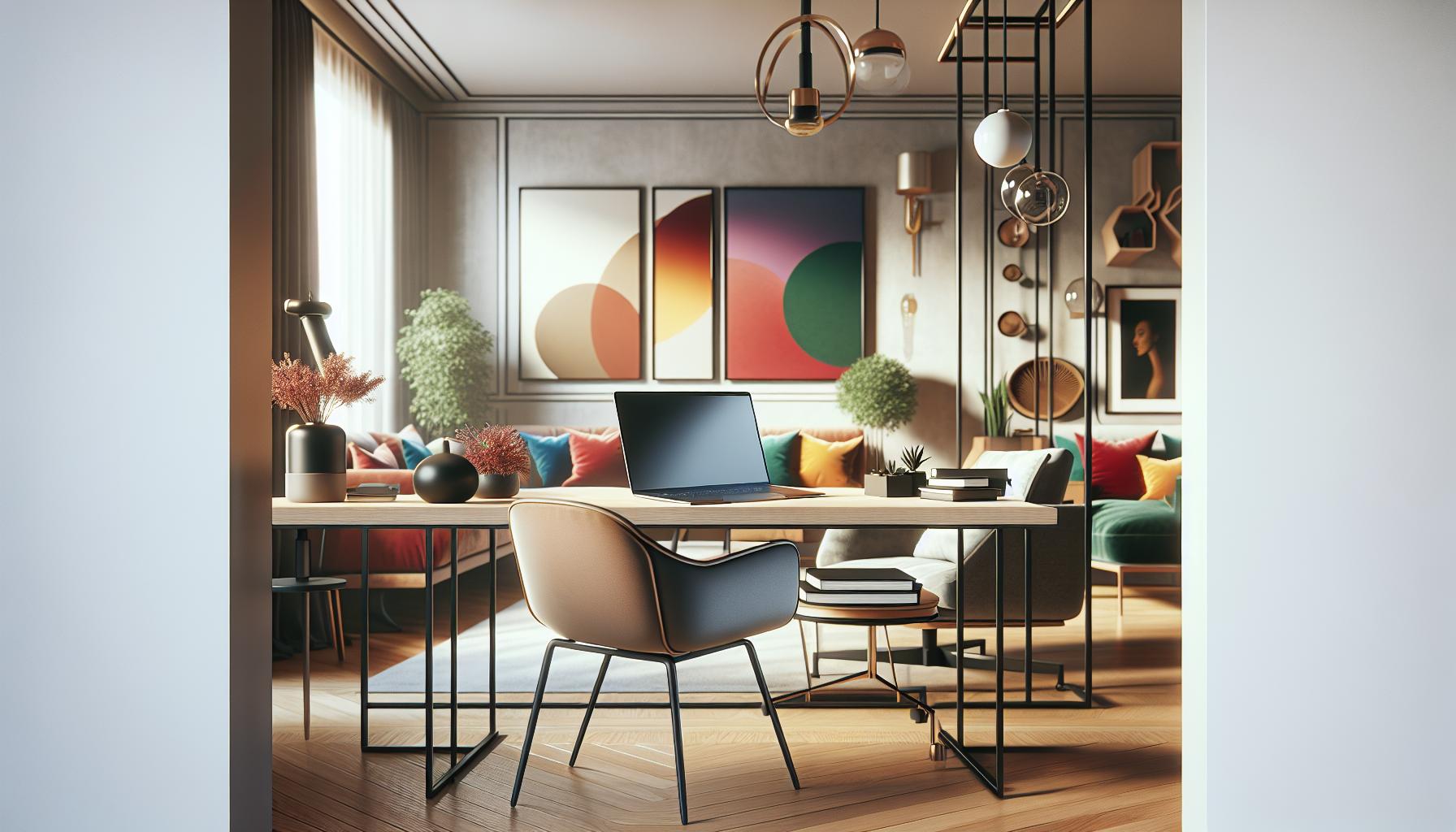When I dive into web design, one thing stands out: the importance of design principles. These principles shape not just the aesthetics of a website but also its functionality and user experience. Whether you’re a seasoned designer or just starting out, understanding these core concepts can elevate your projects and make them more engaging.
In this article, I’ll explore the key design principles that contribute to the overall look and feel of a website. From balance to contrast, each principle plays a crucial role in creating an intuitive and visually appealing online presence. Let’s uncover how these elements work together to enhance user interaction and satisfaction.
Key Takeaways
Understanding Design Principles: Mastering key design principles such as balance, contrast, alignment, repetition, white space, and hierarchy is essential for creating visually appealing and functional websites.
Visual Balance: Achieving balance through symmetrical or asymmetrical arrangements ensures visual stability and enhances user navigation.
Effective Contrast: Utilizing contrast to highlight important elements improves readability and guides user focus on essential areas of a website.
Cohesive Alignment: Proper alignment of visual elements promotes clarity and structure, facilitating easier comprehension and a more organized layout.
Strategic Use of White Space: Incorporating white space helps reduce clutter, improves readability, and draws attention to key components for optimal user experience.
Emphasis on Aesthetics and Functionality: A well-designed website blends visual appeal with usability, ensuring a seamless and engaging user experience that keeps visitors coming back.
Which of The Following is a Design Principle Used to Create The Look And Feel of a Web Site?
Design principles serve as foundational guidelines in web design, enhancing both the aesthetics and functionality of a site. Utilizing these principles creates a more engaging user experience. Key principles include:
Balance
Balance entails distributing elements evenly across a layout. I can achieve symmetrical balance through equality of visual weight. Asymmetrical balance uses differing elements for dynamic appeal. Both methods establish harmony in design.
Contrast
Contrast emphasizes differences in design elements, like colors, shapes, and sizes. I use contrast to draw attention to critical areas, enhancing readability and navigation. High contrast improves accessibility, ensuring all users can engage with content.
Alignment
Alignment organizes elements cohesively, creating a structured appearance. I align text and images to guide user flow naturally, improving comprehension and focus.
Repetition
Repetition reinforces consistency throughout a website. I repeat styles, colors, and fonts to create unity. This consistency helps users recognize and navigate content easily, enhancing brand identity.
White Space
White space refers to the empty areas surrounding design elements. I strategically use white space to reduce clutter, improve readability, and draw attention to essential components. Proper use of white space enhances overall user experience.
Hierarchy
Hierarchy establishes the importance of elements within a layout. I design with visual cues like size, color, and placement to guide users. This approach helps prioritize information and facilitates easy navigation.
Incorporating these design principles not only enhances aesthetics but also significantly improves the overall usability of a website.
Importance of Aesthetic in Web Design

Aesthetic plays a crucial role in attracting and retaining users on a website. A well-designed site combines visual appeal with functionality, creating a seamless user experience.
Visual Hierarchy
Visual hierarchy directs users’ attention to key elements on a webpage. It involves arranging components—such as text, images, and buttons—based on their importance. Larger text or bold colors can draw focus, while smaller elements can provide supporting information. Effective visual hierarchy ensures users can navigate content easily, leading to improved engagement and conversion rates. Implementing clear headings and strategic placement of images reinforces this hierarchy, making it easier for users to find necessary information quickly.
Color Theory
Color theory informs the emotional response users have to a website. Different colors evoke specific feelings; for instance, blue often conveys trust, while red can create urgency. Selecting a cohesive color palette enhances recognition and brand identity. Using contrasting colors for calls to action can increase visibility, guiding users to interact with key elements. Understanding color combinations, such as complementary and analogous colors, can significantly impact the overall aesthetic and functionality of a website, ensuring it not only attracts users but also serves its purpose effectively.
Key Design Principles for Web Aesthetics

Understanding key design principles enhances the overall aesthetics of a website. These principles guide the creation of a visually appealing and user-friendly experience.
Balance and Symmetry
Balance ensures visual stability in a layout. I distribute elements evenly, either symmetrically or asymmetrically, to create harmony. Symmetrical balance involves mirrored arrangements on either side of a central axis, providing a traditional and formal appearance. Asymmetrical balance uses varying sizes and shapes to create interest while maintaining visual weight. Both types of balance contribute to a cohesive design, helping users navigate with ease.
Contrast and Alignment
Contrast plays a vital role in improving readability and drawing attention. I incorporate differences in color, size, and texture to highlight key elements and create visual interest. Effective contrast guides users’ focus toward important information. Alignment organizes elements logically, promoting clarity and coherence. Using a grid system ensures that every component relates to each other, fostering a sense of order. Both contrast and alignment enhance usability while elevating the overall design.
Application of Design Principles

Applying design principles is essential for creating effective web aesthetics and a seamless user experience. Below are key examples and tips that demonstrate practical applications in web design.
Case Studies
- Airbnb
Airbnb employs a cohesive color palette and clean layout to create an inviting atmosphere. The use of white space highlights listings, allowing users to focus on key information. - Apple
Apple’s website exemplifies balance and symmetry. Product images are strategically placed to create visual harmony, enhancing user engagement and guiding navigation. - Dropbox
Dropbox utilizes contrast effectively, distinguishing calls to action with vibrant colors against a neutral background, improving visibility and encouraging user interaction.
- Prioritize Readability
Choose fonts that are easy to read at various sizes. Ensure adequate contrast between text and background colors to enhance legibility. - Leverage Grid Systems
Utilize grid layouts to achieve balance and alignment in your design. Grids help organize content, making it more navigable and visually appealing. - Incorporate Visual Hierarchy
Use size, color, and placement to signify importance. Larger, bolder elements catch the eye first, effectively guiding users through the site. - Embrace White Space
Use white space strategically to reduce clutter. This technique improves focus on essential elements and enhances overall usability. - Test for Consistency
Regularly check for design consistency across pages. Consistent use of colors, fonts, and styles fosters familiarity and strengthens brand identity.
Understanding Design Principles
Understanding design principles is crucial for creating a website that not only looks great but also functions effectively. By focusing on balance, contrast, alignment, repetition, white space, and hierarchy, I can craft a user experience that keeps visitors engaged and satisfied.
These principles guide me in making informed design choices that enhance both aesthetics and usability. When I apply these concepts thoughtfully, I can create a cohesive and visually appealing site that resonates with users. Ultimately, mastering these design principles is key to building a successful online presence that attracts and retains visitors.
